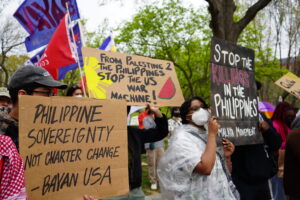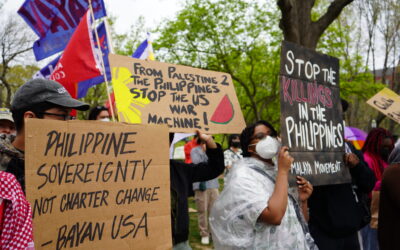Growth slowing for three straight quarters confirms economic decline under the Marcos Jr administration. The economic rebound and momentarily fast growth from reopening, which was measured from the worst economic contraction in the country’s history, is over. The economy has returned to its trajectory of slowing growth that started even before the excessive pandemic lock downs.
Gross domestic product (GDP) has consistently slowed from 7.7% in the third quarter to 7.1% in the fourth quarter of 2022, 6.4% in the first quarter of 2023 and 4.3% in the second quarter. This is consistent with how economic growth was consistently slowing even before the pandemic – from 7.1% in 2016 to 6.9% (2017), 6.3% (2018) and then 6.1% (2019). The low base from the record 9.5% contraction in 2020 was the main reason for seemingly rapid growth reaching 5.7% in 2021 and 7.6% in 2022.
Growth is slowing most of all because depressed family incomes are dampening household consumption spending which historically accounts for some three-fourths of the economy. Household final consumption expenditure has been slowing for five straight quarters and year-on-year growth is down to 5.5% as of the second quarter of 2023 from 10% in the first quarter of 2020. Government spending actually contracted by 7.1% but this has only historically accounted for less than 12% of GDP.
Family incomes are depressed because agriculture and manufacturing, the most important source of steady and quality jobs, both slowed and their shares in GDP continue to shrink. The agriculture, forestry and fishing sector slowed to 0.2% in the second quarter of 2023 from 2.2% the quarter before. Meanwhile, manufacturing growth dropped to 1.2% from 1.9% over the same period. The contribution of agriculture to the economy has shrunk to its lowest level ever at 8 percent; manufacturing continues its decades-long decline and its 17.6% is lower than before the pandemic and as low as in the 1950s or seven decades ago.
These ailing economic foundations cause the worsening jobs crisis, depress earnings and increase poverty.
For instance, 1.6 million or more than half of the 2.3 million jobs created in the second quarter of 2023 from the year before is self-employment, domestic help, or in informal family-operated farms and businesses; this includes a huge 790,000 increase in unpaid family workers in family operations. IBON estimates that the number of outright informal workers grew from 19.5 million to 21.1 million, or approaching half of the 48.4 million employed in the second quarter of 2023. By hours worked, over 2 million of the 2.3 million jobs created is just part-time work which now accounts for 18.3 million or nearly two-fifths (38%) of total employment.
Real wages and family earnings are also clearly failing. Even in the National Capital Region (NCR) where the minimum wage was hiked last month, the now Php610 nominal wage is 47.6% short of the Php1,164 family living wage for a family of five. The real value of the nominal wage is only Php515 as of June 2023 which is still less than its Php520 value when the lockdowns started in March 2020.
The lack of decent livelihoods and incomes is worsening poverty. The Social Weather Stations (SWS) reported self-rated poverty, including borderline poor, increasing from 20.1 million in June 2022 to 21.6 million in June 2023. According to the Bangko Sentral ng Pilipinas (BSP), the number of households without savings increased in the first year of the new administration from 18.7 million to 18.8 million.
With growth slowing and the economy clearly losing momentum, the economic managers have lost their last indicator for claiming good economic performance. Real recovery is nowhere in sight as long as the same old economic thinking persists. The government’s claim that its 6-7% growth target for the year is still achievable is oblivious to worsening joblessness and poverty, declining agriculture and industry, and weaker exports and investments amid a global slowdown.
Its narrow-minded fiscal conservatism also prevents it from stimulating the economy with income assistance for households and boosting local agriculture and industry. ###

![Growth slowing for three straight quarters confirms economic decline under the Marcos Jr administration. The economic rebound and momentarily fast growth from reopening, which was measured from the worst economic contraction in the country’s history, is over. The economy has returned to its trajectory of slowing growth that started even before the excessive pandemic lock […]](https://www.altermidya.net/wp-content/uploads/2023/08/2023-0811-Q2NAP.png)








0 Comments